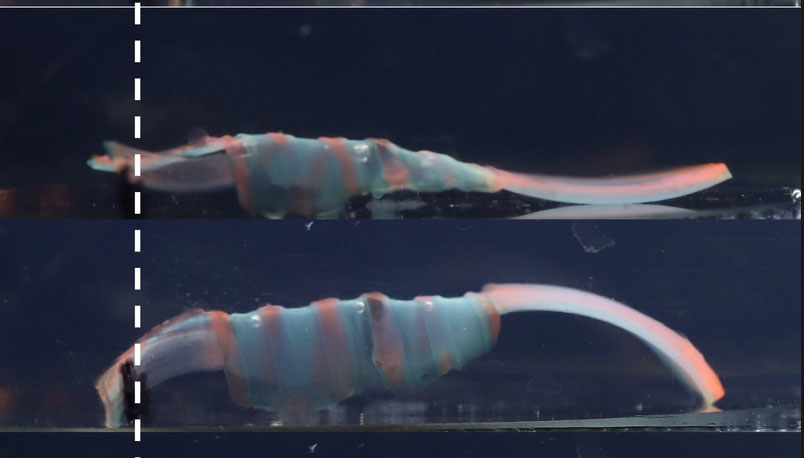Researchers at Johns Hopkins University have described their work on worm-like gel robots in a technical paper. The engineers relied on 3D printing to create them.
The robots are said to have no power source, nor wiring, and were made using 3D printing techniques.
According to lead author David Gracias, a professor of chemical and biomolecular engineering at Johns Hopkins University, the robot acts solely by swelling and shrinking gel. This, of course, is a stark contrast to traditional robots, which are made of metal or hard plastic.
Some of the most promising materials for soft robotics are water-based gels because they deform relatively easily with temperature changes. The researchers ultimately use this to create smart structures.
“Our study shows how manipulating the shape, dimensions and patterning of gels can tune the morphology to embody a kind of intelligence for locomotion.”
Now, for the first time, Johns Hopkins University researchers have been able to use the mere extension and contraction of joints to make a robot move forward and backward.
Gracias says there are many applications where robots can be useful to humans. The most exciting, however, is moving on surfaces in the human body. This could be used to better administer medications, but that’s just the beginning, the team explains in them report. In the future, they plan to test forms inspired by worms and marine organisms, and possibly even equip them with electronic sensors.
Find out more about the Johns Hopkins University at jhu.edu.
Subscribe to our Newsletter
3DPresso is a weekly newsletter that links to the most exciting global stories from the 3D printing and additive manufacturing industry.






















